Palworld vs. Ark: Survival Evolved shows just how much survival games have changed in 9 years, even when they seem so similar
NotPokémon versus Dinosaurs: How does Palworld stack up against the survival game the landmark survival game?
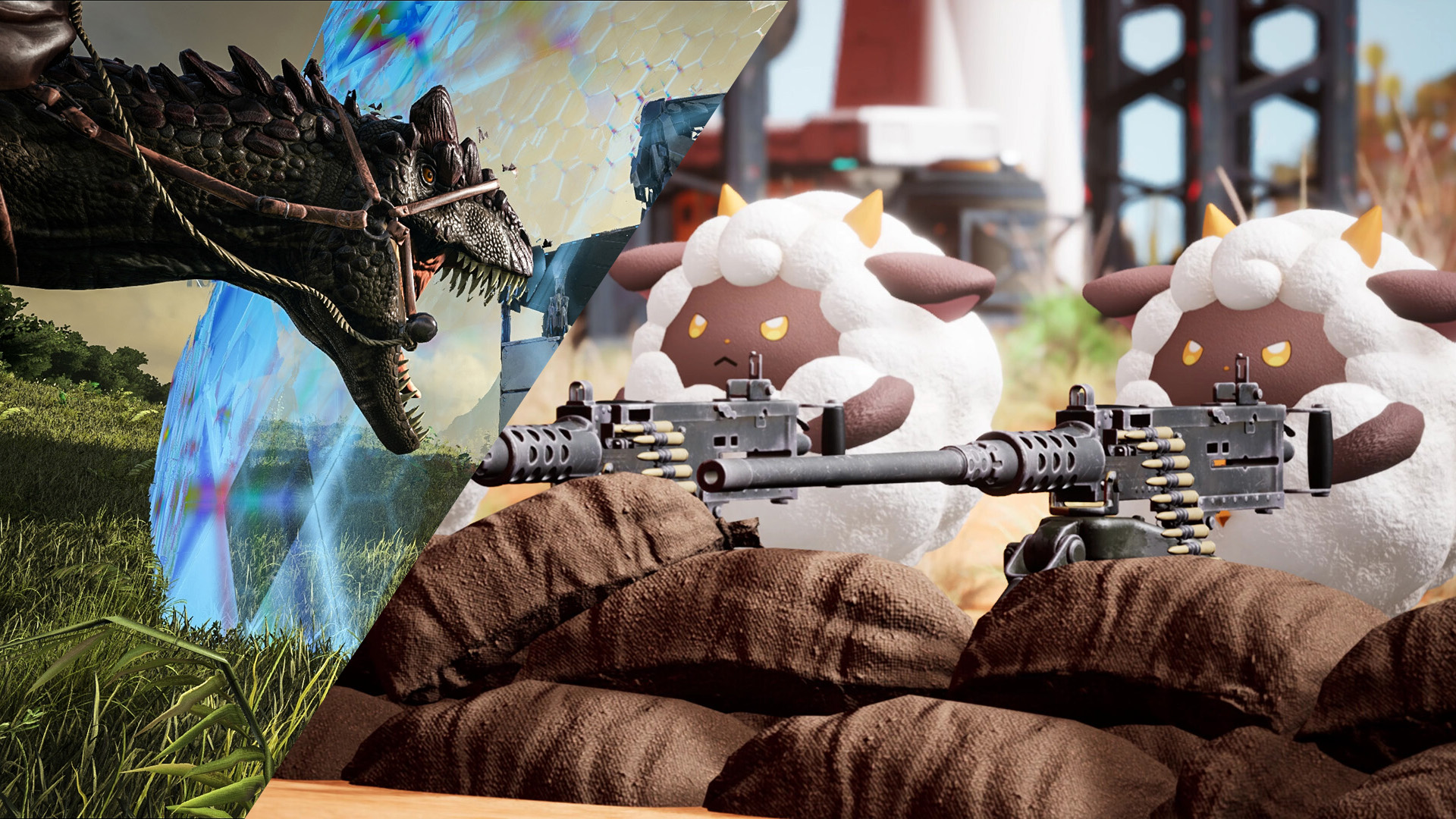
Palworld is an undeniably huge hit, despite debate still raging as to whether its Pokémon-like creature designs are overly similar, plagiarized or even stolen. Beyond those creatures, Palworld isn’t very Pokémon-like at all—but it is quite a bit like another survival crafting sandbox: Ark: Survival Evolved. You know, the one with the dinosaurs.
Why have 19 million players and counting people rush to play a smaller, less feature-rich take on an existing hit game from 2015? Well, the Pals, obviously. But there are a surprising number of reasons beyond the Pokémon-esque creatures if you stack the two games against each other. Let’s break down some key similarities between Ark (the original Survival Evolved version, rather than the recent and still-expanding remaster) and Palworld.
1. Install size
Before you even download either game, there’s one stark difference between the two: just how much of your hard drive you’ll have to sacrifice for it.
Fully installed, Palworld currently weighs in at a relatively svelte 19.2gb. Small, compared to most triple-A games. Part of this is because there’s just less content here overall (it did only just make its early access debut) but it’s not a huge commitment to download or install.
Unlike its dinosauric rival.
Ark (again, the original Survival Evolved version) weighs in at a staggering 128gb just for the base game with only the first map playable. With all six of the main story expansion maps installed, it's a behemoth 223gb. And if you install every official map (remember, this is without mods) it swells into a hard-drive-demolishing half-terabyte of game. One of the biggest games in existence.
2. Performance
Ark doesn’t just weigh heavily on your hard drive. It’s notoriously one of the most system-demanding games around. Even the most cutting edge gaming rigs, 4090s and 14900ks at the ready, will struggle to run it at max settings and get anywhere near a consistently high framerate at anything above 1440p, with things only getting worse when big player-made structures have to be rendered.
Keep up to date with the most important stories and the best deals, as picked by the PC Gamer team.
Palworld is still far from the most optimized game you can play on PC, but a Geforce 2060 from 2019 will let you hit a mostly consistent 60fps at 1080p and max settings. A little spritz of DLSS brings that to 90fps if you’re willing to drop down to just ‘high’ detail. A high-end current machine will be hitting 120fps with everything cranked to full.
Both games do scale all the way down to the Steam Deck, if you’re willing to settle for a 30fps target framerate. Palworld handles things well at medium/low settings, while Ark needs to push settings and resolution scaling even further down.
3. PvP

I believe that part of Palworld’s early meteoric rise is because it launched without PvP. While competition between player groups is planned for later updates (including the data-mined possibility of using special Pal Spheres to steal other player’s Pals), at the moment it’s a purely co-operative game (with up to 32 players to a server)—and that perhaps makes it better suited as a solo experience, too.
Ark, on the other hand, is notorious for its brutal no-holds-barred PvP. On public servers (holding up to 70 players by default), newbies can often expect to find themselves clubbed, captured and griefed if they’re not pressed into service by one of the local player groups. Bases are also vulnerable to being assaulted even when players are offline. Resource gain and stats are also geared towards this MMO-lite structure, so if you’re playing solo, you might want to tweak those numbers while setting up a new world.
4. Early game accessibility

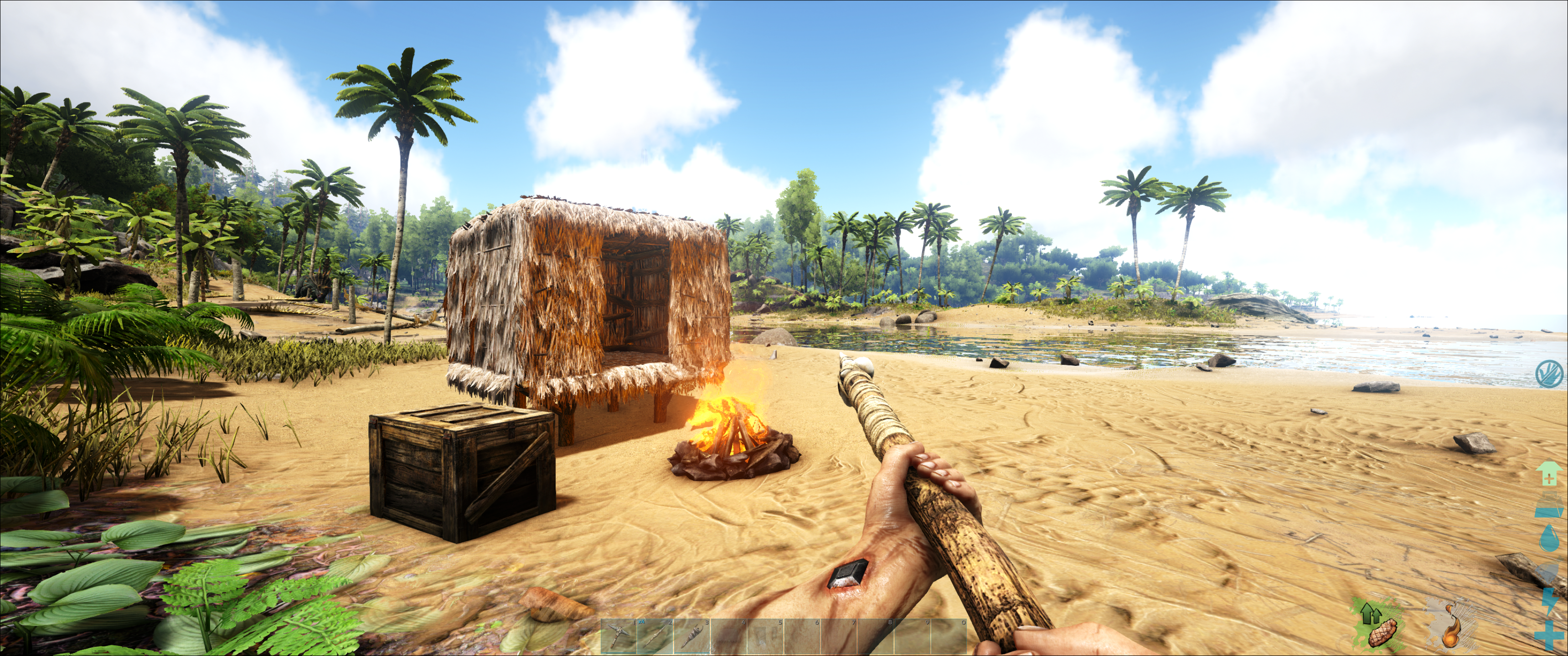
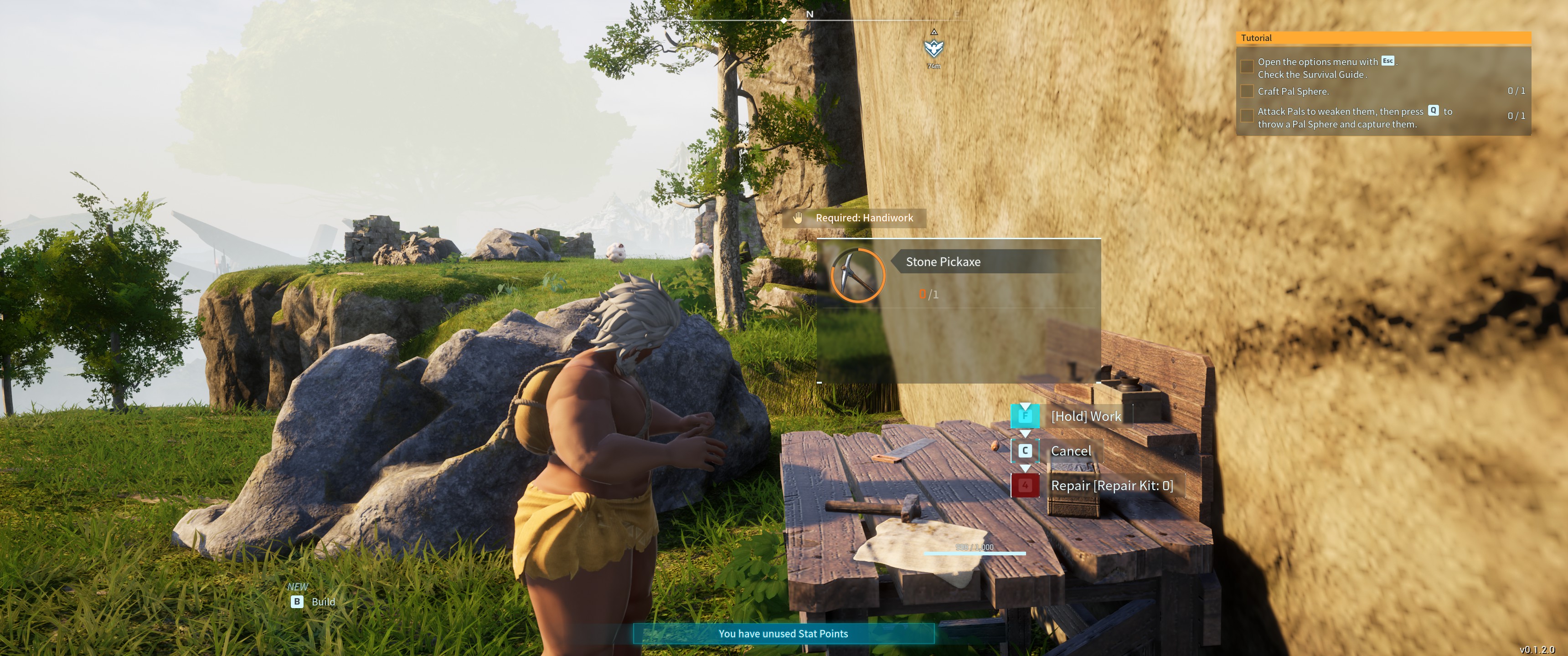
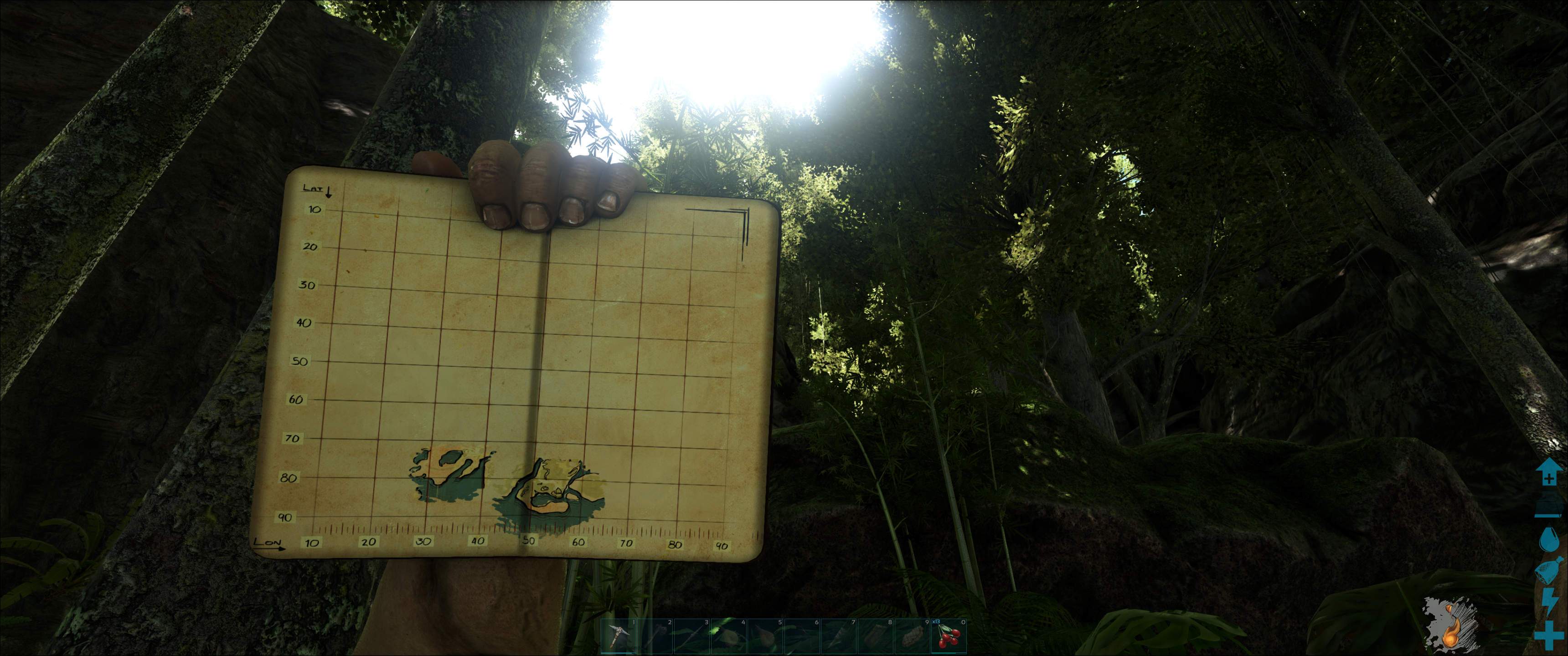
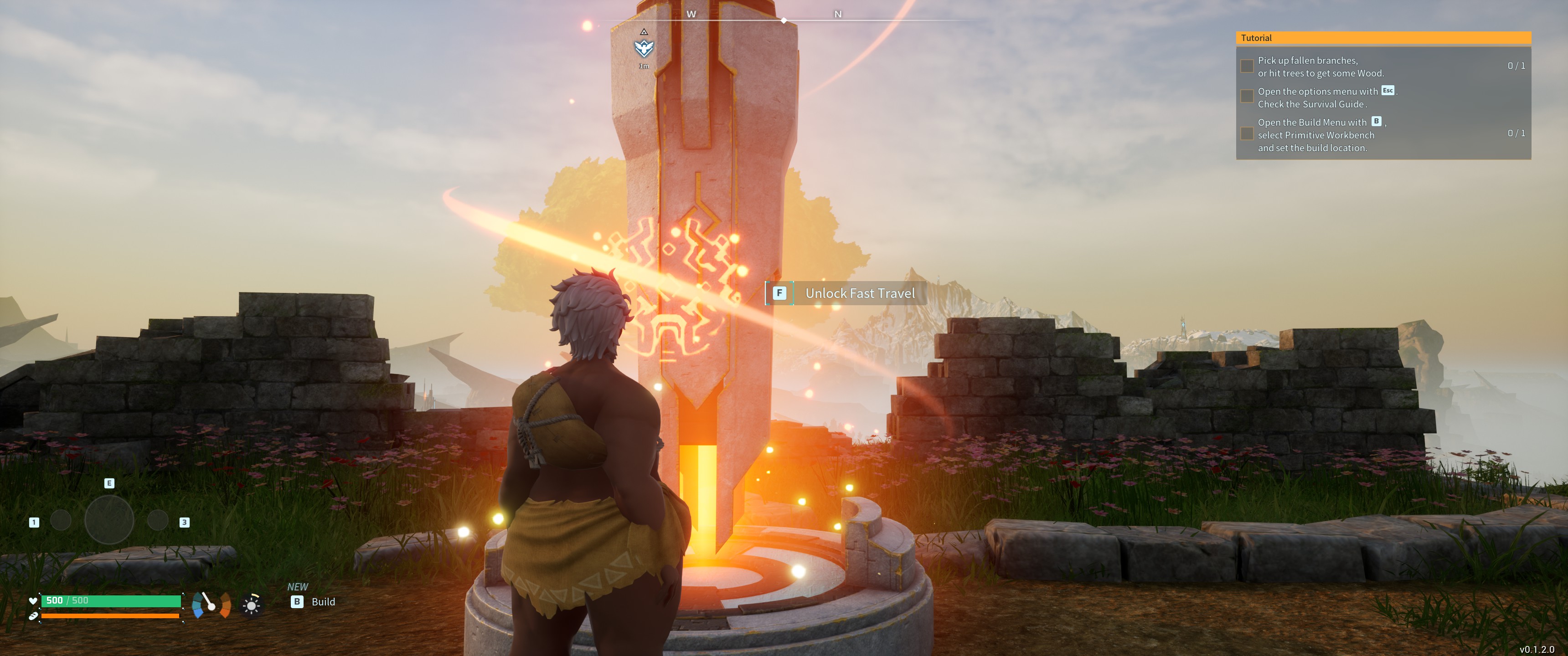
Another area where Palworld is significantly friendlier than Ark is how it onboards new players.
Ark offers a variety of locations to start your adventure, scattered around its massive maps, some marked as easier than others. Even if you pick one of those, it’s still quite possible to get mauled by a random aggressive dinosaur spawn within moments of starting, and it can sometimes take a bit of trial-and-error (and some luck) until you’re able to carve out a little space for a hut somewhere to place your sleeping bag respawn point.
Palworld starts all players out on a Breath Of The Wild-esque plateau. It's a largely safe location with mostly harmless critters roaming around, plentiful resources and some nice flat spaces to build on. There’s also a tutorial NPC that gives you some light guidance (and warns you that the Pals are deadly, bloodthirsty beasts), and a checklist of basic objectives for you to work your way through. It’s a gentle ride for your first few hours unless you wander too far afield.
5. Building interface
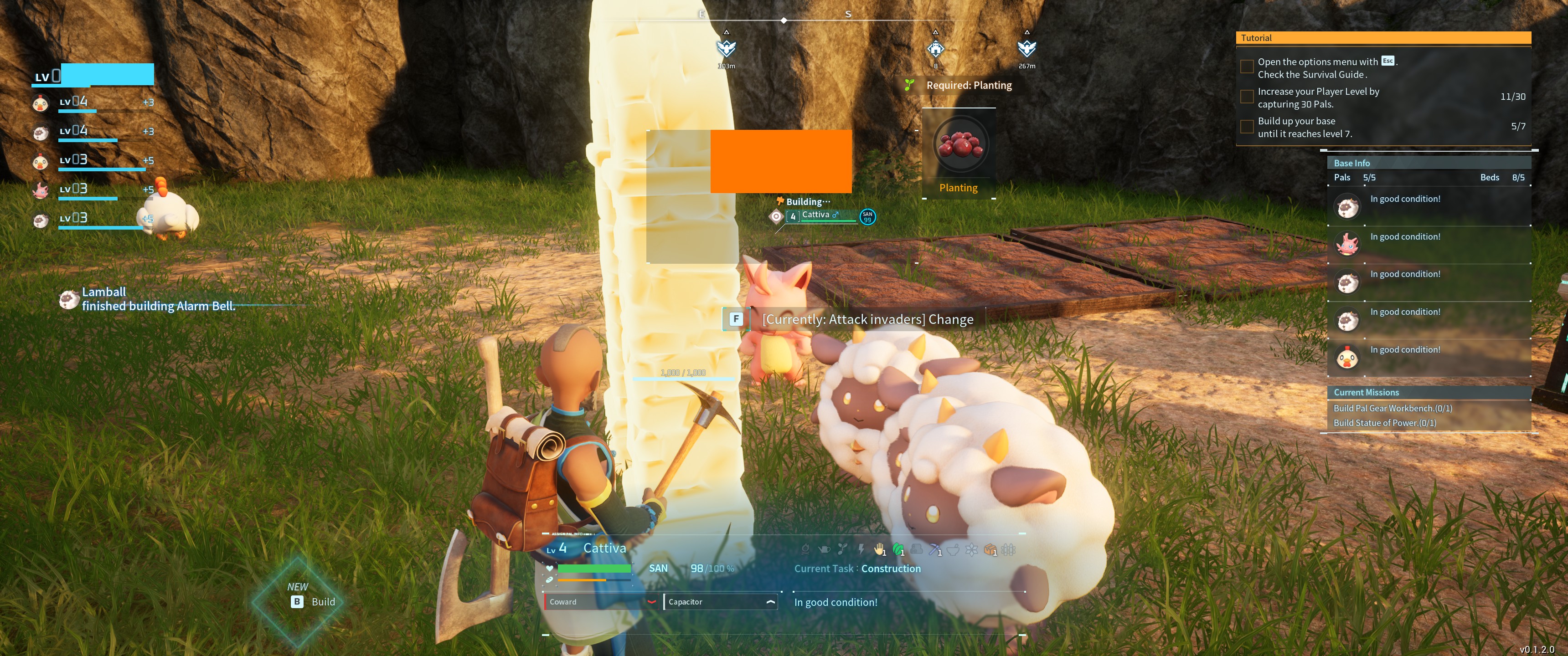
Base-building is a central element of both games. In Ark, as with Minecraft before it, you’ve got to gather all your resources manually, craft them into building pieces (such as foundations, walls, doors, ceilings, etc), and then lug those over to where you want to place them, load them into your hotbar, select the items and get building. It’s surprisingly cumbersome, plus there’s a lot of traveling back and forth between storage boxes, as without putting a lot of level-up stat increases into weight capacity, moving around enough wood and stone to build a structure can take forever and you’ll have to rely on tamed dinosaurs to lighten the load.
Palworld’s construction is a lot more streamlined. So long as you’ve got a Palbox placed, designating the heart of your base, all the basic construction resources you’ve got stashed in boxes will be accessible to you wherever you’re standing within your zone of control. You don’t need to weigh your inventory down with them. Instead of crafting individual building components, you place down blueprints which draw from your resource pool, greatly speeding the process. You’re allowed a maximum of three bases, too, each with their own Pal population. Buildings still need some assembly, but your tamed Pals will probably handle that. More on that next.
6. Creature taming
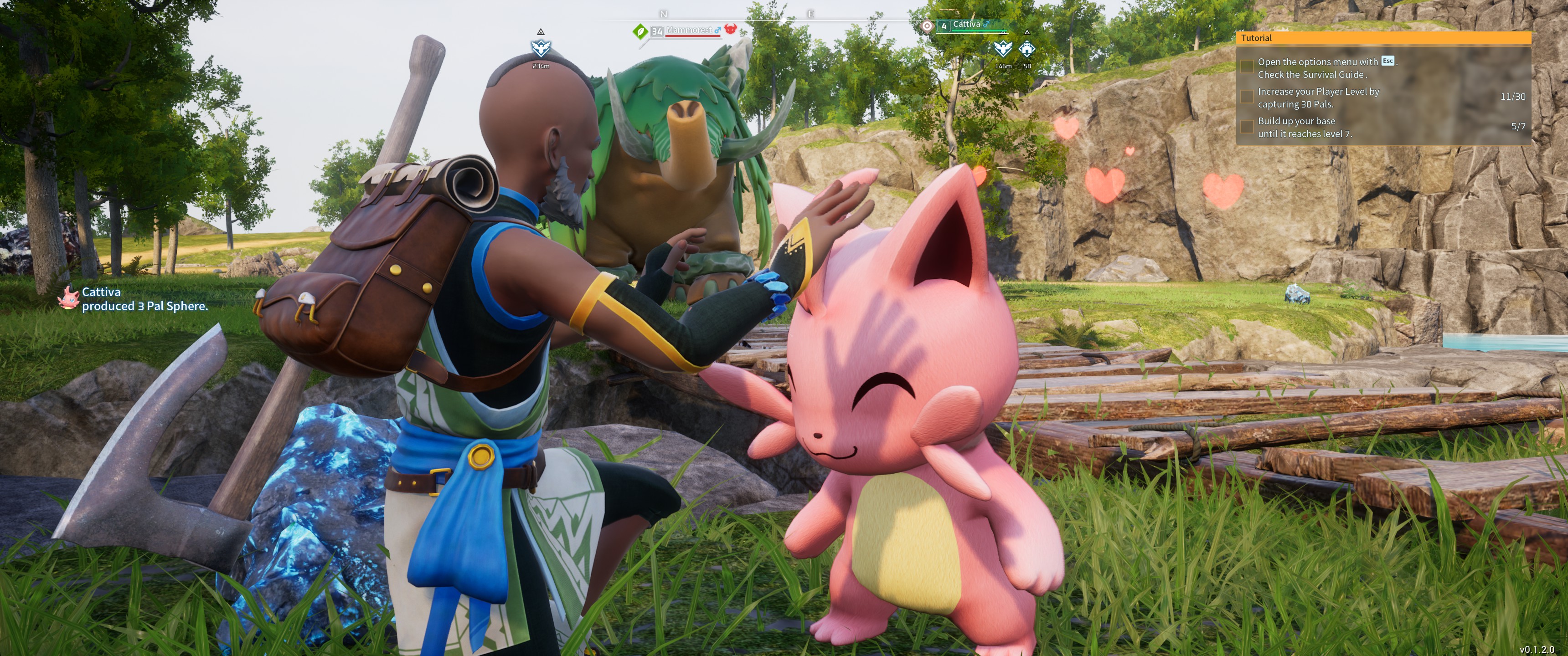
Compared to Ark, Palworld’s creature collecting works—unsurprisingly—a lot more like Pokémon. You craft Pal Spheres at your base, you fight the creature you want until it’s low on health, and then you bean it in the face with an orb. If you did enough damage and won the capture dice roll, congrats, you’ve got yourself a new Pal! You can carry five around at once, deploy one at a time, and assign up to 15 (or 20, depending on the server) to work at each of your bases. It’s simple, frictionless and fun. Building up a small army of critters is just a matter of being able to beat them in a brawl.
Ark frog mount"
Ark takes a longer-term approach befitting its more social MMO-lite structure. Dinosaurs need to be stunned, penned and gradually tamed by slowly feeding them, letting them become hungry again, feeding again and repeating this slow process until you’ve earned their trust. Once tamed, some can be ridden if you’ve crafted the right kind of saddle. It’s a long process, but essential for many of the bigger fights in the game, including boss battles where you’re allowed to bring up to 20 of your best fighting critters into the arena with you.
7. Combat

Despite being similar conceptually, juggling limited stamina and resources, fighting is a very different experience between Ark and Palworld, largely due to the difference in (default) camera perspective.
Palworld is a much more mobile game. You’ve got a reliable dodge roll, enemy attacks tend to be well telegraphed, and creatures aren’t likely to just pick you up and snap you in half. There’s a bigger focus on ranged combat, with many Pals having projectile moves. Bows (and later guns) provide reliable ranged options. Plus your own summoned Pals will be sharing the combat duties and tanking hits, and providing interesting twists through combat moves.
View post on imgur.com"
Ark is more straightforward, but arguably messier. While there is a third-person camera, fighting mostly takes place in first person, and almost all the dinosaurs you’ll be fighting will want to rush into melee. Arrows may help deal some early damage, but you’ll be spamming basic melee attacks a lot of the time in a race to whittle down a dinosaur’s health bar. Once you’ve got a summoned (or even saddled) dino or two, ranged combat becomes more viable, but it’s a bit messier to fight overall—a setup better geared towards, again, that MMO-lite structure.
8. Conclusion
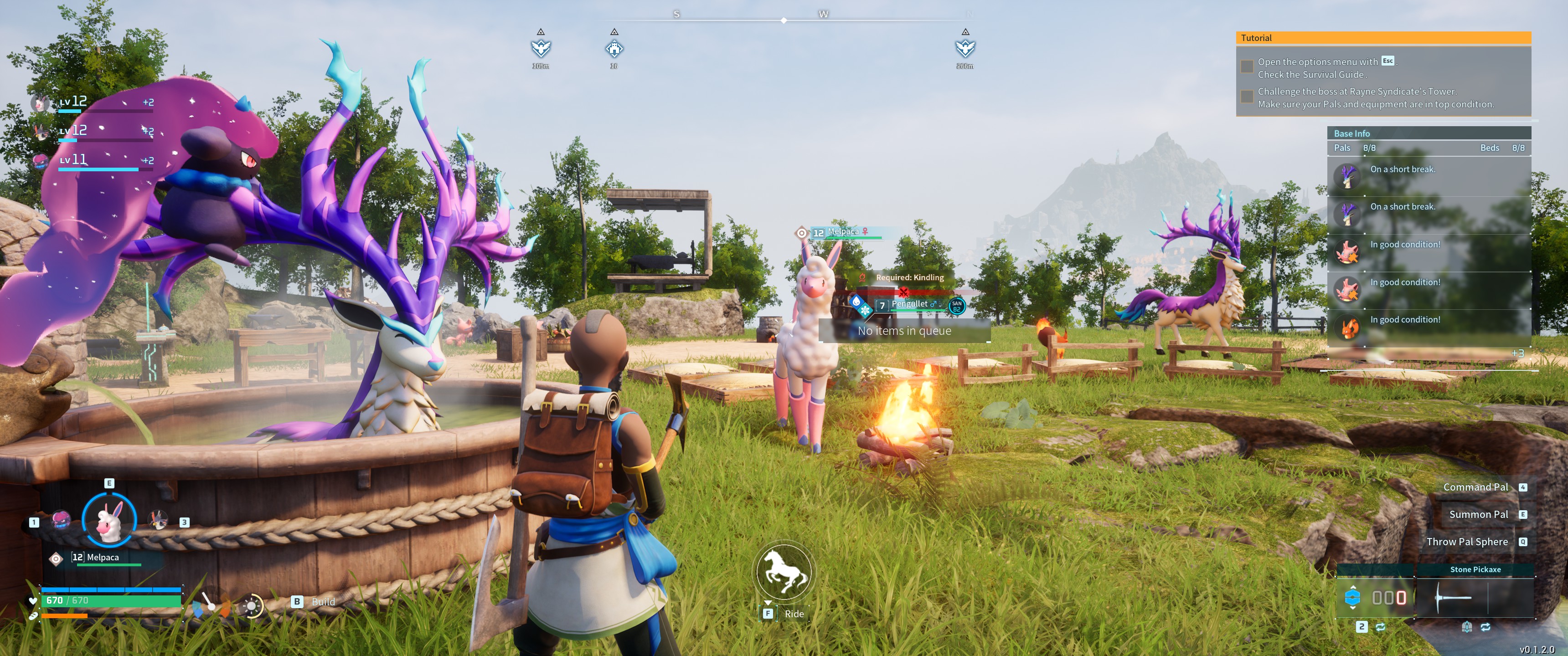
Palworld takes the core concept of Ark and sands down almost all of the rough edges. It’s easier to get into, faster to build bases, faster to assemble a little legion of friendly critters, and more accessible for solo players. It’s relatively slight on things to do right now, with not much in the way of story progression or goals beyond leveling up and beating world bosses, but the sky’s the limit now, especially as developer Pocket Pair has now raised more money than god.
Whether that’s what you’re looking for in a game about cutthroat survival against the elements is another matter entirely. Ark is still a hugely popular game because it offers a distinct and challenging experience, and one of the most brutal PvP structures known to man. Thrilling to some, terrifying for others, but distinct nonetheless. Perhaps by the time the much-hyped Ark 2 comes out (apparently starring Vin Diesel), some Palworld players will be itching for something more challenging.
Whichever you choose to play, just expect to lose way too much of your free time. If they get their teeth into you, these games are all-consuming time-vampires. You have been warned.

The product of a wasted youth, wasted prime and getting into wasted middle age, Dominic Tarason is a freelance writer, occasional indie PR guy and professional techno-hermit seen in many strange corners of the internet and seldom in reality. Based deep in the Welsh hinterlands where no food delivery dares to go, videogames provide a gritty, realistic escape from the idyllic views and fresh country air. If you're looking for something new and potentially very weird to play, feel free to poke him on Bluesky. He's almost sociable, most of the time.

